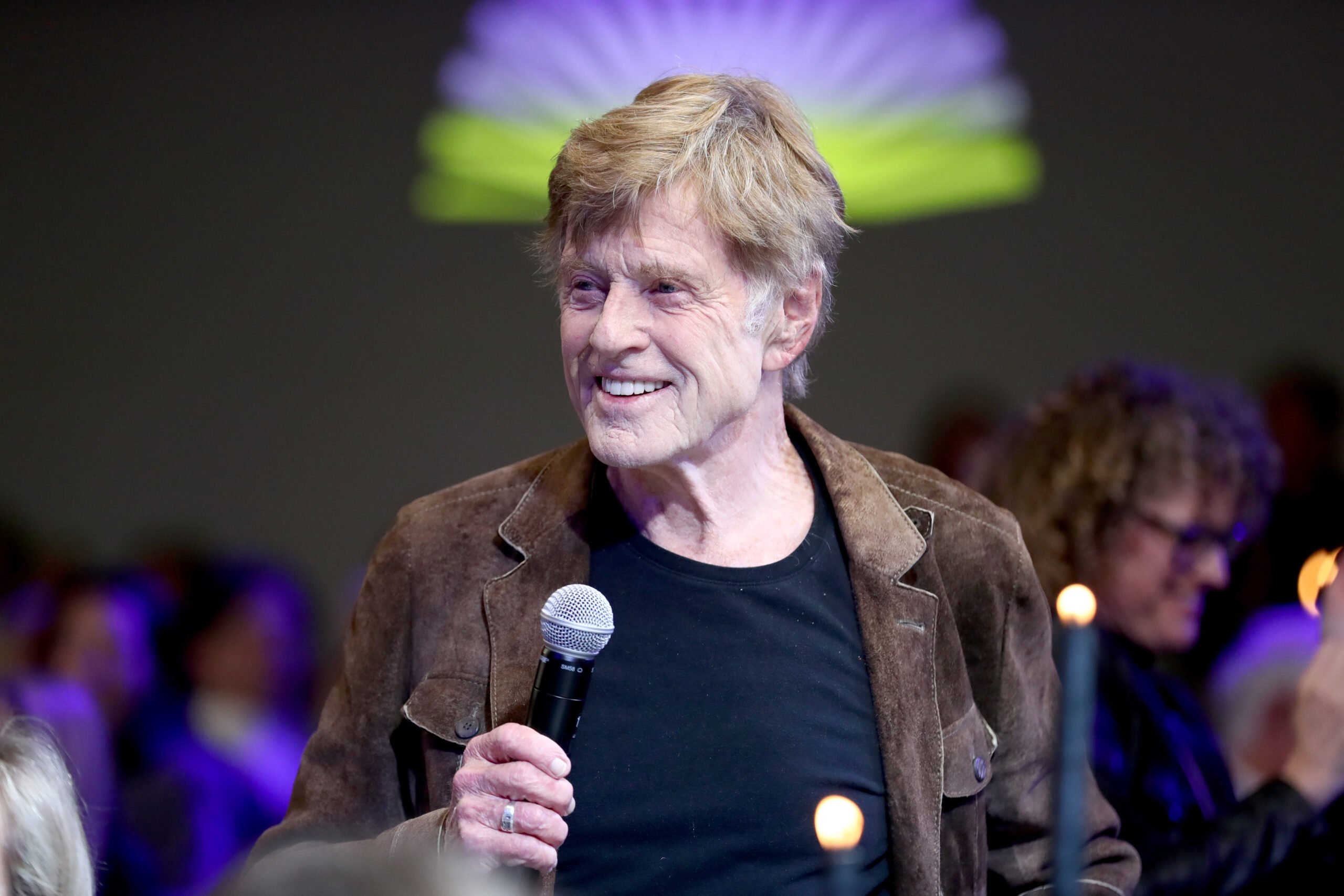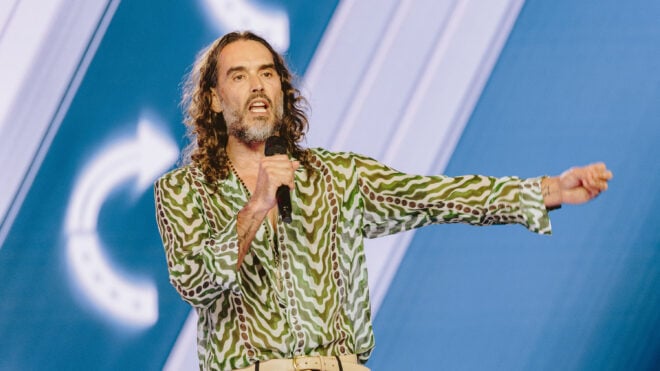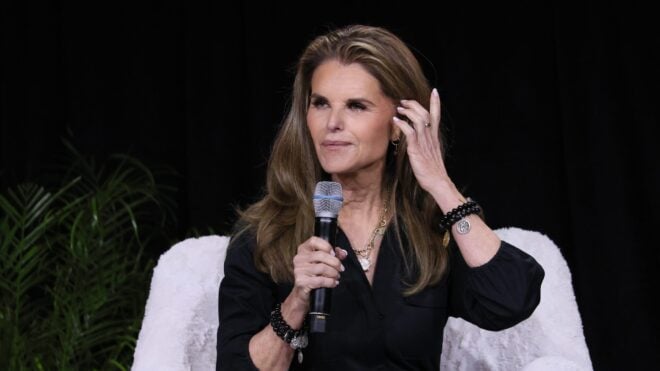
LOS ANGELES — Robert Redford, a generational icon who commanded the big screen as the star of Butch Cassidy and the Sundance Kid and The Way We Were and won awards and lasting praise for directing films such as All the President’s Men and Ordinary People, has died at 89.
Long a critical force in the elevation of independent film-making through the Sundance Institute, Redford died Tuesday morning at his home in Utah, according to The New York Times.
Redford was a natural star who seemed to comfortably reflect the post-war zeitgeist in America with his choice of movie roles and side projects. As Newsweek put it, “What Redford has always captured best is the flawed American hero.”
Redford’s most memorable roles were arguably those that exploited the juxtaposition of the actor’s chiseled, class-president good looks and his ability to conjure up a scarred and hostile psyche. Whether he was playing the sulky, driven Olympic hopeful in Downhill Racer, the corruptible political idealist in The Candidate, or the charismatic outlaw in Butch Cassidy, Redford said he hewed that line “between what appears and what is.”
“There was always that tension and the darker side is what interests me,” he said. “People always ask me, ‘Why did you play all those inarticulate guys?’ Well, that was the way you made the point — playing a character who can’t always articulate what he’s feeling and who has to develop action to find out.”
The late director Sydney Pollack, a frequent Redford collaborator, explained his allure this way: “Bob is a minimalist; he withholds, he never seduces his audience but makes them come to him.”
In films such as Jeremiah Johnson, Downhill Racer, The Candidate, and Ordinary People, which were among his favorites, Redford examined ways that individuals are affected and sometimes broken by their environments. Later in his career, that notion held true for his performance as Our Man, a tormented sailor adrift at sea in All is Lost. Redford was the only actor in the film and had all of 51 spoken words, yet was nominated for a Golden Globe.
In turns a wry comic, matinee idol, bankable box-office draw, indie titan, and devoted preservationist, Redford carefully cultivated the superstardom based on his boyish charms and capitalized on the post-studio-boss system as he became the de facto godfather of the independent film movement.
As a filmmaker — one with carefully wrought ideas and a genuine cinematic palette — Redford lobbied for various environmental causes onscreen and off, including American Indian rights, offshore oil drilling, and global warming.
“I gave up a long time ago the idea that a film can change people’s lives, let alone their politics,” Redford said in a 2007 Playboy interview. “I discovered we Americans enjoy the distraction of entertainment but aren’t really interested in the deeper message.”
The Santa Monica native eventually turned his back on LA and headed to the Rockies where he spent his first decent paycheck on land. “I lived through that moment when Los Angeles traded its rural soul to a smog-spewing industry machine, and it made me very sad,” he told biographer Michael Feeney Callan.
Charles Robert Redford Jr. was born in 1936 in Santa Monica to a working-class family and grew up in a heavily Latino neighborhood in South LA.
“There was this real camaraderie, with the paper drives and everybody sacrificing,” Redford told The Times in 2007. “And suddenly the war (World War II) ended and this weird thing happened. Suddenly everything was about class. And then there was an anger you could just feel.”
His father, Charles Sr., took the family on weekly outings to the Santa Monica Public Library, where young “Charlie” devoured Greek mythology. Comic strips and radio were among the family’s affordable pleasures but on occasion, his mother Martha took her son to the Aero theater.
“These weren’t happy times; nobody had much,” he told The Times in 2000. “The library’s where I got into this mythology. But how the people came together was radio, or the funny papers. Sunday was a huge deal. You’d go racing for the funnies. Without knowing it, I was very connected to them.”
The family moved to Van Nuys but Redford found it sterile and loathed his new neighborhood.
After graduating in 1954, he went to the University of Colorado on a baseball scholarship but he promptly drank his way off the team. He briefly studied painting in Paris before returning stateside to pursue acting.
“I think part of the reason I became an actor is to deal with that exhibitionistic side of yourself,” he said. “I love performing. It’s agony, but it’s also terrific. Don’t ever let anybody tell you differently.”
Like many of his contemporaries, Redford’s road to stardom took him by way of theater and television, appearing on the usual slate of variety and anthology series in the early 1960s — Playhouse 90, Perry Mason, Play of the Week, and Alfred Hitchcock Presents while booking what he could in theaters. By 1962, he had appeared in a Twilight Zone episode and the low-budget Korean War thriller War Hunt with Pollack.
The late director, who specialized in romances that frequently had political themes, would become a frequent Redford collaborator and the first to direct his friend, in 1966’s This Property is Condemned.
Still a relatively unknown stage actor, Redford’s break came in his 20s when director Mike Nichols cast him as the lead in Neil Simon’s Broadway comedy Barefoot in the Park. The 1963 comedy was a hit and Redford was touted as the new Cary Grant.
The play opened the door to more films, including the film adaptation of Barefoot in the Park opposite Jane Fonda, which made him a popular leading man.
But he arguably became “the Robert Redford” when he was paired with Paul Newman in 1969’s Butch Cassidy and the Sundance Kid, his character later serving as the namesake for his annual film festival. The picture about two affable bandits who have outlived their time became the highest-grossing Western in motion picture history and highlighted the duo’s near-perfect comic timing.
Redford said it was the most fun he had ever had on a film he had ever and cemented a lifelong friendship with Newman.
“We developed a friendship off that film, and things fell into place,” he told The Times in 2015. “It didn’t require a lot of talk but what came with it was fun. I owe much of my career to Paul.”
Redford followed Butch Cassidy with 1969’s Downhill Racer, and then the 1972 comedy The Hot Rock. He re-teamed with Pollack in Jeremiah Johnson, in which he played a mountain man who becomes the object of a vendetta. In 1973, Redford made his producing debut on The Candidate, a dark, satirical look at campaigning that further established him as a serious actor and earned an Oscar for best writing.
Redford returned as a romantic lead in Pollack’s 1973 glossy The Way We Were with Barbra Streisand. He was the all-too content Hubbell to Streisand’s Katie — one of the more talked-about movie couples of the year. The blockbuster won Academy Awards for original song and original music score, and a Grammy for top song from a film.
He partnered with Newman again in 1973’s The Sting as they played two con men trying to get even with a mob boss. Its seven Oscar wins, including best picture, capped off a great year for the actor who received his one and only lead actor Oscar nomination for his breezy performance.
His hot streak continued with Alan J. Pakula’s 1976 drama All the President’s Men, in which he and Dustin Hoffman embodied Washington Post newsmen Bob Woodward and Carl Bernstein, respectively. The film won four Oscars, including one for William Goldman’s adaptation of the Watergate reporters’ bestseller and another for Jason Robards’ role as then Post editor Ben Bradlee. The drama was the third-highest grossing of the year, was listed on AFI’s 100 greatest films of all time, and was hailed as an instant classic by Times film critic Charles Champlin.
When it was revealed that the Watergate burglars had connections to the Nixon White House in 1972, Redford convinced Woodward to secretly meet with him in Washington, DC, and the reporter “confessed that he didn’t think I was for real. That I was a setup,” Redford told The Times in 2006. “They were so paranoid. They knew they were being watched.”
Redford reached out to the reporters before their book was even written, as the story was still evolving, and bought the film rights for $450,000 through Warner Bros. in 1974.
In 1978, Redford’s production partner Sterling Van Wagenen launched the US Film Festival in Utah with John Earle and Cirina Hampton. Redford’s wife Lola Von Wagenen, Sterling’s older cousin whom Redford wed in 1958, loved Utah and the star bought land there in the 1970s.
In 1981, the Sundance Institute was established, a film and theater development lab on a corner of his Utah property that spawned such films as El Norte, Heartland, and the Oscar-winning The Trip to Bountiful. Redford’s presence at the festival was erratic and at times shadowy, as not to eclipse the festival’s filmmakers.
“One of the things that made me nervous in the last 10 years is how the film industry has become more centralized,” Redford said. “One of the things that I think is most valuable is its diversity, which is exactly why I developed Sundance — a mechanism for developing new ideas and new talent.”
In 1984, the institute took over the US Film Fest and installed the Sundance name. Redford served as the honorary chairman, supporting independent films that help drive the organization and the festival. His annual directors’ brunch became a rite of passage for young filmmakers and a prime networking opportunity for new directors.
In the 1980s, Redford seemed to deliberately slow down in order to do more thoughtful work, such as his Oscar-winning directorial debut in 1980’s Ordinary People, based on Judith Guest’s novel about a repressed well-to-do family and the emptiness lurking beneath the facade of white, upper-middle-class propriety. Redford clinched an Oscar, a Golden Globe, the Directors Guild’s top prize, and numerous other prizes for the film.
He followed that with The Milagro Bean Field War and then The Natural, a mythical baseball story based on the Bernard Malamud’s novel of the same name. In 1985, he played another romantic lead in Pollack’s Out of Africa opposite Meryl Streep. The commercial hit earned another seven Oscars but critics were not kind about Redford’s performance. He also starred in the widely panned 1986 romantic comedy Legal Eagles with Debra Winger and Darryl Hannah.
Despite his celebrity, Redford’s led a remarkably private life. He spent most of his time in Utah or the Napa Valley, and raised his four children with Van Wagenan in New York before they divorced in 1985. He married German abstract artist Sybille Szaggers in Germany in 2009.
When Havana was released in 1990, Redford agreed to give a rare glimpse into his private life for an NBC documentary, a concession he made to help promote the film.
“I have kind of a purist view that is no longer practical, that I would rather have my work speak for me … But then I’ve always separated my public self from the private so I could have one. I don’t feel I’ve owed my life to the public — a performance, yes, but my life, no.”
Havana was his seventh and final big-screen collaboration with Pollack — a big-ticket Casablana-style romance that opened during a crowded holiday season, pitting it against Hamlet and Godfather III, among others.
Though he didn’t want to cast Redford in the role, Pollack praised the actor’s aristocratic qualities and the actor’s instincts and intuition. However, Redford was panned for lacking chemistry with his younger costar, Lena Olin.
“Bob is an easy target. You know the attitude, ‘Why does he always have to be a hero? Why doesn’t he gain 30 pounds for a role or wear a funny nose?’” Pollack recalled in a 1990 interview with The Times. “Well, I don’t think we want Redford to be that way. For three decades he’s been a kind of metaphor for this country and his film roles have reflected that.”
Redford acknowledged that the criticism stung.
“Yeah, it does bother me,” Redford said. “There’s not a lot I can do about it. You lose something and you gain something somewhere else. You move from doing the work and having that carry the day to having your own persona confused in the performance by other people and, yeah, by maybe yourself too.”
The 1990s were an up-and-down period for Redford. Quiz Show, a film about the real life TV game show scandals, was nominated for four Oscars and A River Runs Through It, an endearing coming of age story set in the outback of Montana, was a hit with critics but less so with audiences. It won an Oscar for cinematography.
In 1993, he earned his first Razzie Award playing a rich man who offers a couple a million dollars to spend a night with the wife in Indecent Proposal. He fared no better in Up Close & Personal in 1996. He directed The Horse Whisperer and the golf biopic The Legend of Bagger Vance, neither a critical success.
He went on to work on the 2004 Che Guevara biopic The Motorcycle Diaries, directed the Lincoln period piece The Conspirator in 2010, and Lions for Lambs, a 2007 Afghanistan war thriller that that again paired him with Streep and Tom Cruise.
In 2012, he starred and directed The Company You Keep, playing a former Weather Underground militant in hiding for 30 years. Though he had been involved with smaller-scale, socially conscious dramas, he also jumped on the superhero bandwagon by enlisting in Marvel’s juggernaut franchise Captain America: Winter Soldier.
“I’m doing this film because it’s different. It’s a new thing for me,” he told The Times. “I think these films are really powerful. I think they’re great. This is the kind of film I would have loved to see as a kid.”
The adulation washed over him in 2013 as the star of J.C. Chandor’s All Is Lost, a film with no dialogue that featured only Redford onscreen. His character, simply referred to as Our Man, was a lone sailor adrift on a broken boat. At 77, he did more of his own stunts than originally intended and said he lost 60% of hearing in one ear after high-pressure water was sprayed onto him during a storm simulation. With no dialogue or other performers as a crutch, Redford was forced to act on an elemental level in a manner he had never done before.
Though physically demanding and unsure of the film’s general reception, Redford told The Times that he “just liked doing it.”
“It was my ego,” Redford said. “My ego jumped in and said, ‘Hey, you can do this. You can do this.’”
In 2014, the Documentary Assn. gave him the Career Achievement Award for having had “a major impact on the documentary genre though a long and distinguished body of work.” He had already received an honorary Oscar in 2002 for his body of work. In 2016, President Barack Obama award Redford with the Presidential Medal of Freedom.
Much of his time was spend on activism, however. In 2012, Pitzer College in Claremont launched the Robert Redford Conservancy for Southern California Sustainability emulating the actor’s penchant for combining art, media and environmental science to educate students about policymaking. Redford was a trustee and special advisor to the university on environmental matters
After an aging Newman passed on joining Redford for A Walk in the Woods in 2004, he instead teamed up with Nick Nolte for the film, which was released in 2015. Nolte recalled the advice given to him by their mutual lawyer and Redford’s frequent partner, Gary Hendler:
“You have to have a career like Bob. He does a couple of studio movies and then gets to do one for himself.”
In 2018, he announced his retirement from acting ahead of the release of his light-hearted caper, The Old Man & the Gun.
Nardine Saad
Los Angeles Times
(TNS)
———–
©2025 Los Angeles Times. Visit at latimes.com. Distributed by Tribune Content Agency, LLC.



